Last year, we began a new seasonal tradition: an annual Paris quiz, with one question for each of the city’s 20 arrondissements. Today, we continue that tradition.
Like last year, I’ve gone low-tech, letting you calculate your own score. The answers are at the bottom of the page, but if you prefer to reveal the answer after each question, there are links to help you jump between the sections. I’ve left ample gaps so you can avoid spoilers. I don’t expect the quiz to be easy, but I do expect it to be a chance to discover a few facts about this great city, Fabric of Paris-style. Enjoy, and good luck!
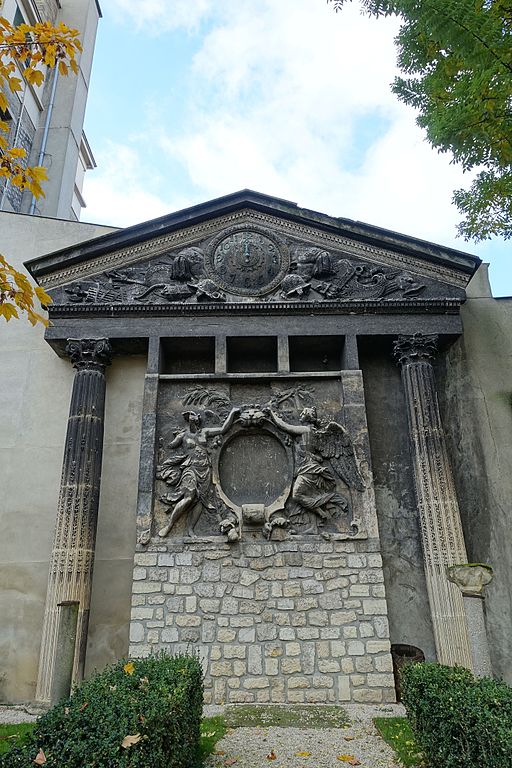
1. Which park in the 1st arrondissement was once the garden of a royal palace? The official residence of all French monarchs after the Revolution, it was burned down during the dramatic Bloody Week at the end of the Paris Commune.
2. Which king features on horseback in a statue in the Place des Victoires?
3. Recently refurbished, but switched off shortly thereafter, what is the Défenseur du Temps?
4. The fountain next to the Centre Pompidou was created in honour of which composer?
5. Which of François Mitterrand’s famous “grands projets” is located in the 5th arrondissement? Its current president is Mitterrand’s culture minister, Jack Lang.
6. The Mairie of the 6th arrondissement lies on which street named after a controversial monarch?
7. Opened for the 1900 Exposition Universelle, which Parisian station was the world’s first electrified urban terminus? The trainshed now houses a celebrated museum.

8. Which prestigious avenue in the 8th arrondissement is named after a British monarch?
9. How many metro stations, serving how many metro lines, connect by underground walkways to Auber RER station?
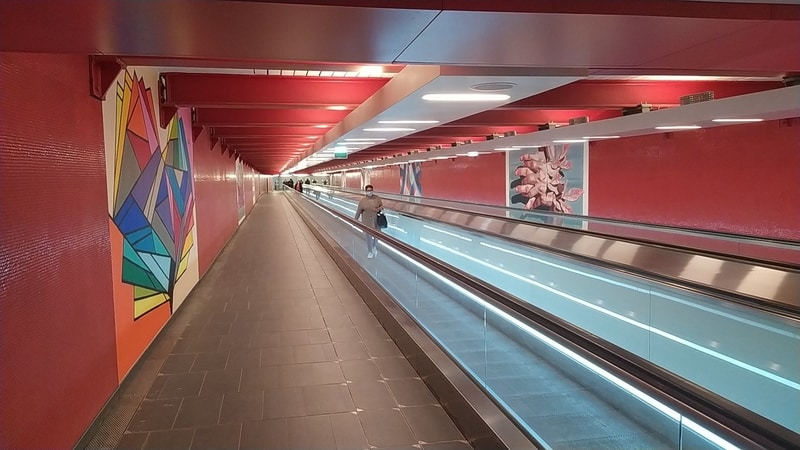
10. How many countries can be reached by regular direct trains from stations in the 10th arrondissement?
11. Which metro station in the 11th arrondissement is themed around the potato, and why?
12. The 12th arrondissement features four lakes. Name one.
13. Which mainline railway station, named after a Napoleonic battle, can be found in the 13th arrondissement?
14. In 2021, which metro station in the 14th arrondissement acquired the suffix “Joséphine Baker”, after the dancer, Resistance hero and civil rights activist?
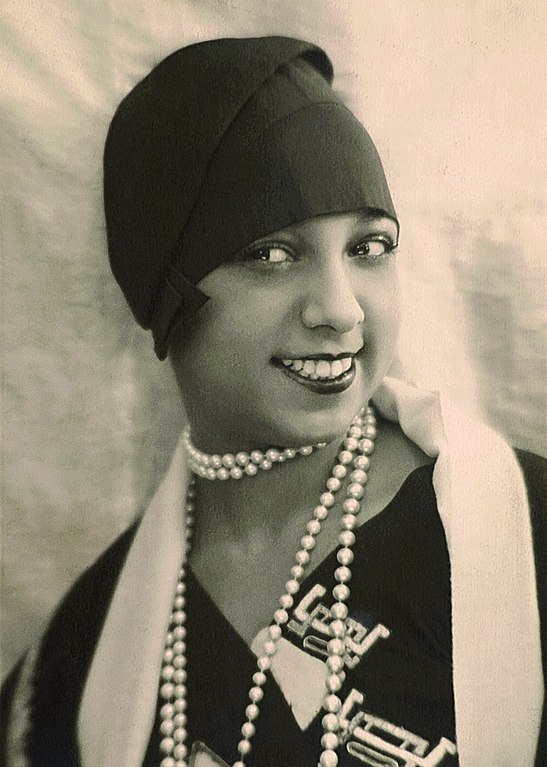
15. In which park in the 15th arrondissement can you find a tethered helium balloon? The world’s largest according to the operator, it carries tourists and measures air quality.
16. Which tram line is set to be extended to Porte Dauphine in 2024, bringing trams back to the 16th arrondissement after an absence of almost a century?
17. What transport line runs under the Promenade Pereire, a linear park in the 17th arrondissement?
18. The Pont Caulaincourt, Paris’s oldest steel bridge, carries a road over what obstacle in the 18th arrondissement?
19. You can find an operational lifting bridge in the 19th arrondissement. Which street, named after a distant peninsula, does it carry?
20. The Jardin de la Gare de Charonne, a park in the 20th arrondissement, lies on the site of a station on which railway, now mostly disused?
With the questions over, it’s time for a Christmassy interlude.
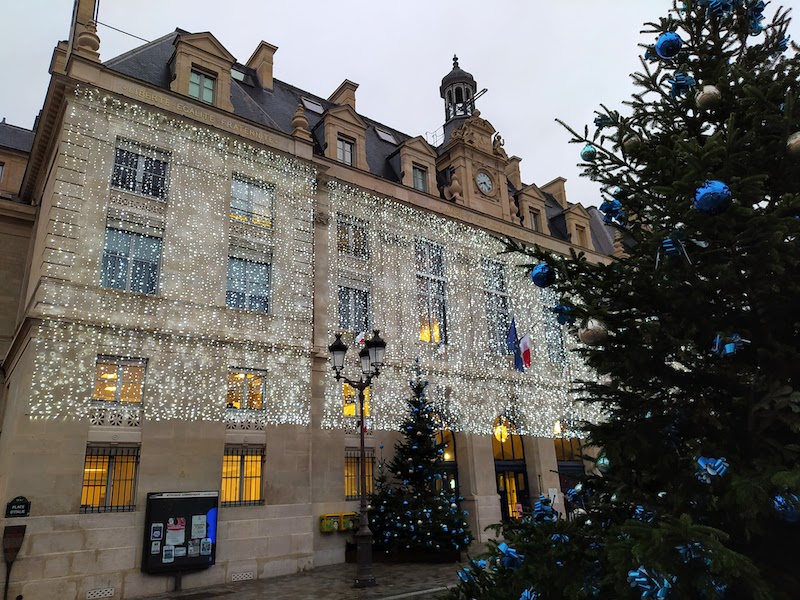
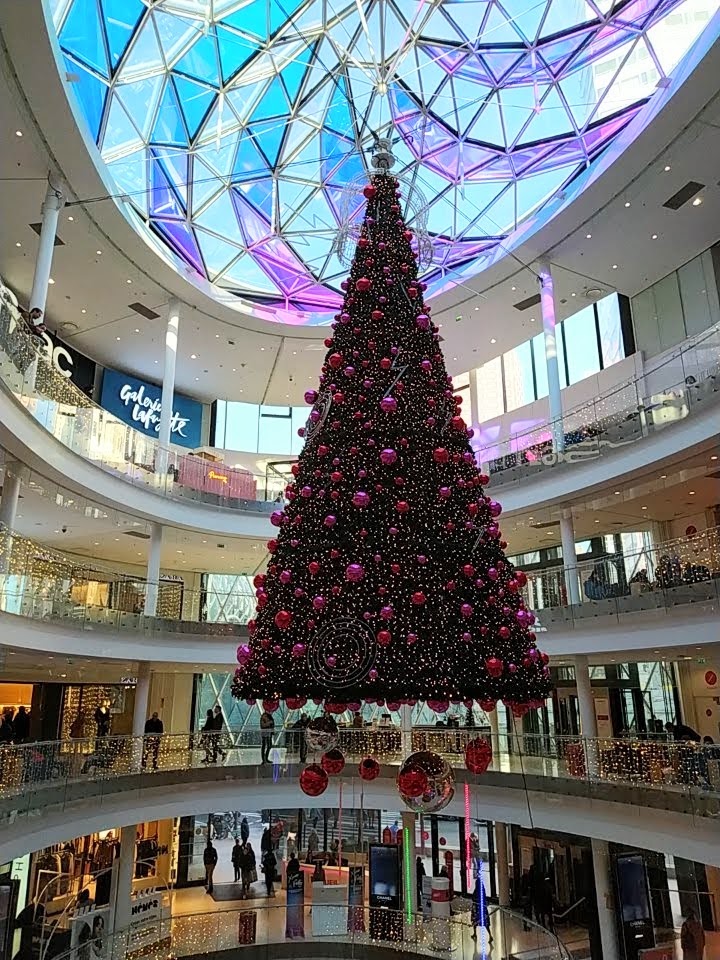
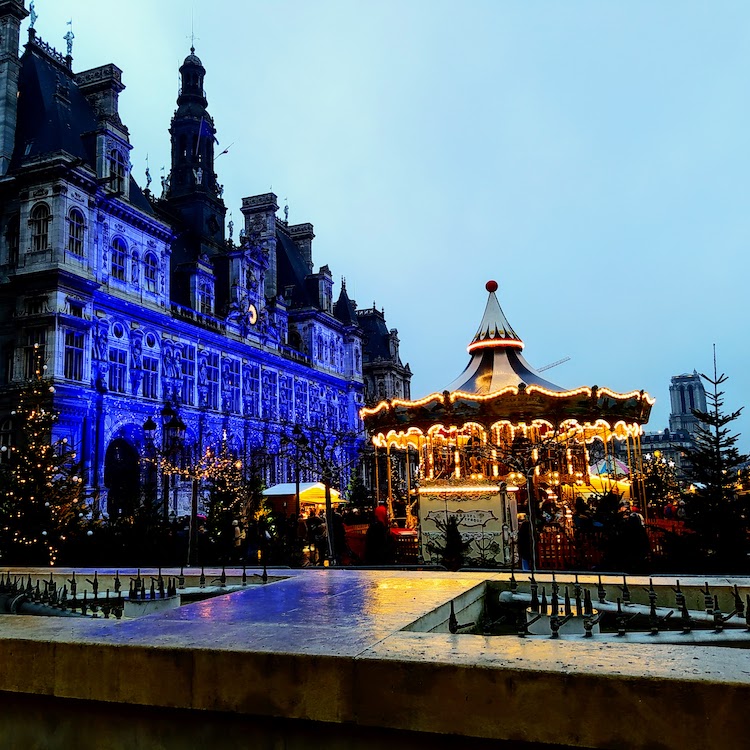
1. Which park in the 1st arrondissement was once the garden of a royal palace? The official residence of all French monarchs after the Revolution, it was burned down during the dramatic Bloody Week at the end of the Paris Commune.
The answer: The Tuileries garden
Laid out in 1564 for Catherine de’ Medici, the Tuileries garden offers a pleasant way to stroll from the Louvre to the place de la Concorde.
2. Which king features on horseback in a statue in the Place des Victoires?
The answer: Louis XIV
The Place des Victoires was created in 1685, at the height of the Sun King’s power, as the third Parisian “place royale”. It honours his victories in the Franco-Dutch War as well as his Edict of Fontainebleau, seen at the time as a victory against French Protestants.
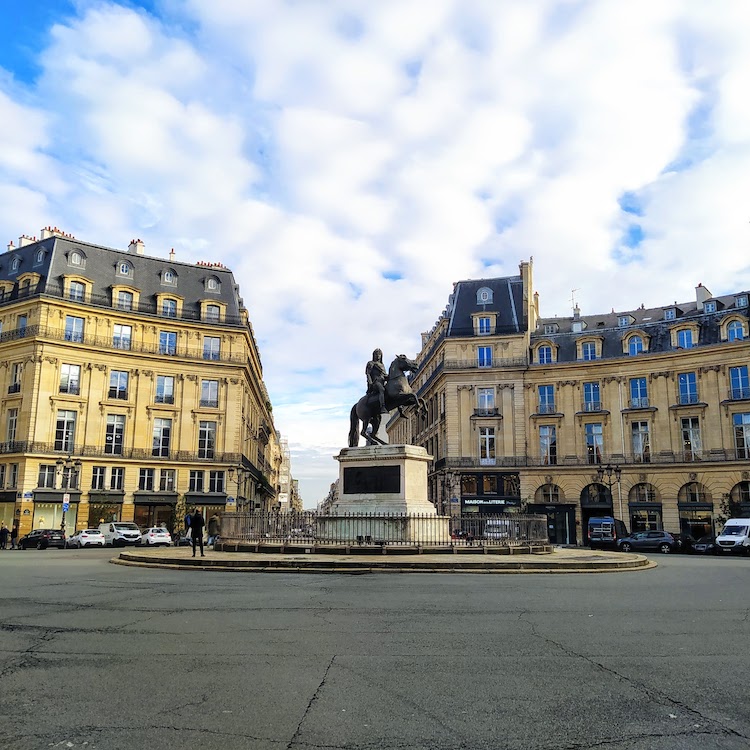
3. Recently refurbished, but switched off shortly thereafter, what is the Défenseur du Temps?
The answer: A clock
Installed in 1979, the Défenseur du Temps is the eponymous “horloge” – clock – of the Quartier de l’Horloge. This mixed-use development replaced an “îlot insalubre” – an area officially designated as unsanitary, right in the heart of the city.
The clock, which had been stopped since 2003, was set going again in 2023. Locals and tourists alike could enjoy the hourly spectacle of the “defender of time” fighting back a dragon, a bird or a crab. Unfortunately, the mechanism was stopped months later, due to a lack of funds for maintenance. The clock faces themselves are still operational, so this isn’t one for my lists of stopped clocks.
4. The fountain next to the Centre Pompidou was created in honour of which composer?
The answer: Igor Stravinsky
Russian-born composer Igor Stravinsky spent a good chunk of his life in France, naturalising in 1934. Many of his works premiered in Paris.
The fountain in his honour was installed in 1983 and was the work of sculptors Jean Tinguely and Niki de Saint Phalle. It intended to contribute to the regeneration of the area, alongside the Centre Pompidou and the Quartier de l’Horloge. After standing stationary for many years, it was renovated between 2022 and 2023 so that its moving parts could once again turn. For how long?
5. Which of François Mitterrand’s famous “grands projets” is located in the 5th arrondissement? Its current president is Mitterrand’s culture minister, Jack Lang.
The answer: L’Institut du monde arabe
The Arab World Institute was founded in 1980, during the presidency of Valéry Giscard d’Estaing, with the goal of providing a secular setting for the representation of Arab culture in France. The building was constructed during the tenure of François Mitterrand, and became known as one of his “great projects”. Designed by Jean Nouvel, it received awards for its amalgamation of Arab and western styles. Jack Lang was appointed president in 2013, the latest in a succession of white men to hold the title.
6. The Mairie of the 6th arrondissement lies on which street named after a controversial monarch?
The answer: La rue Bonaparte
The rue Bonaparte was created in 1852 by Napoleon I’s nephew, Louis-Napoléon, who was soon to crown himself Napoleon III. It was a simple renaming of a series of three preexisting streets leading from the Seine to the Luxembourg garden. It’s just 1 km long, but it features an incredible density of listed monuments.
7. Opened for the 1900 Exposition Universelle, which Parisian station was the world’s first electrified urban terminus? The trainshed now houses a celebrated museum.
The answer: La Gare d’Orsay
The Gare d’Orsay was built at the site of the Orsay palace, which, like the Tuileries, had been destroyed by arson during the final days of the Paris Commune.

8. Which prestigious avenue in the 8th arrondissement is named after a British monarch?
The answer: George V
First created in 1858, the avenue de l’Alma was renamed after the king of England in 1918, at the tail end of the First World War. The neighbouring avenue du Président Wilson was also renamed around the same time, after the US president. The avenue George V today forms one edge of the so-called “golden triangle” of luxury properties, bounded on its other sides by the avenue Montaigne and the Champs-Elysées.
9. How many metro stations, serving how many metro lines, connect by underground walkways to Auber RER station?
The answer: Four stations, seven lines
Auber station on RER line A connects directly to Havre-Caumartin, and via moving walkways to Opéra. On the other side of Havre-Caumartin, passengers can connect to another RER station: Haussmann – Saint-Lazare on line E. This offers a connection to Saint-Lazare metro station (which itself directly serves the mainline station). From the platforms of line 14 at Saint-Lazare, transfer is possible with Saint-Augustin. In all, this creates a vast complex serving seven metro and two RER lines. Two of the stations serve line 9, and three serve line 3.
10. How many countries can be reached by regular direct trains from stations in the 10th arrondissement?
The answer: Seven: Austria, Belgium, Germany, Italy, Luxembourg, the Netherlands, and the UK
The 10th arrondissement is home to two of Europe’s busiest stations: the Gare du Nord and the Gare de l’Est. Besides serving major French cities like Lille and Strasbourg, these offer connections with a number of European countries. From the Gare du Nord, passengers can travel to Belgium, the Netherlands and Germany, as well as the UK via the Channel Tunnel. TGVs from the Gare de l’Est serve Germany and Luxembourg. Though trains to Italy usually depart from the Gare de Lyon, the luxurious Venice Simplon Orient Express offers sleeper service to Venice from the Gare de l’Est. Tickets for that will set you back over £3000. More affordable night trains existed to Venice prior to 2020, operating from the Gare de Lyon.
The VSOE occasionally serves destinations in other countries: Czechia, Hungary, Switzerland and even Turkey. Meanwhile, prior to 2020, the Moscow Express took passengers from the Gare de l’Est to Poland, Belarus and Russia.
11. Which metro station in the 11th arrondissement is themed around the potato, and why?
The answer: Parmentier
Parmentier station is named and decorated in honour of Antoine-Augustin Parmentier, a scientist known for encouraging the cultivation of the potato. For more detail, see the article I wrote about the station earlier this year.
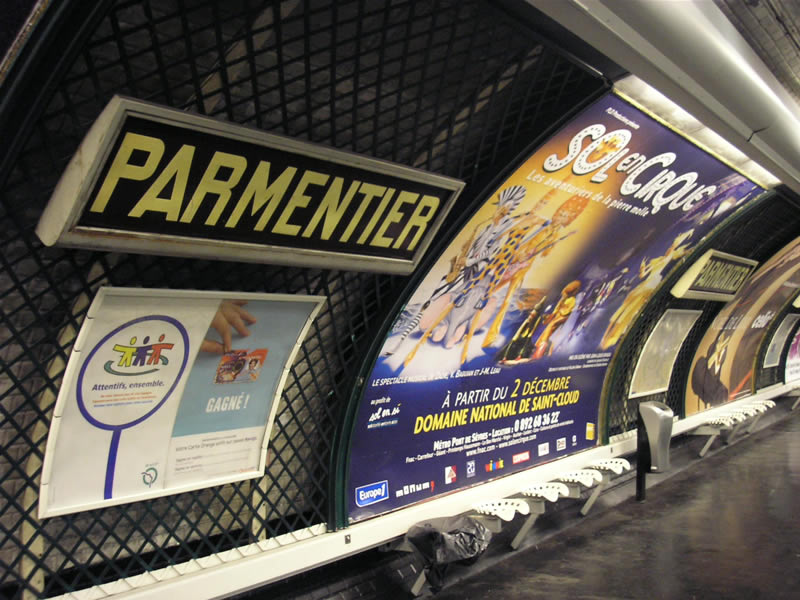
12. The 12th arrondissement features four lakes. Name one.
The answers: Lac Daumesnil, Lac des Minimes, Lac de Gravelle, Lac de Saint-Mandé
After crowning himself emperor in 1852, Napoleon III left his mark on Paris with a wholesale transformation of the city, including new boulevards, new architectural standards, new parks, and the annexation of neighbouring towns to double its surface area. To the west and east, just outside the new boundary, old royal hunting forests were transformed into extensive parks. In the east, this was the Bois de Vincennes. In 1929, this park was officially brought inside the administrative limits of Paris, placing it in the 12th arrondissement. It features four lakes: Daumesnil, Minimes, Gravelle and Saint-Mandé. The Lac Daumesnil is the largest at 12 hectares, and the closest to the city. Visitors can rent a boat to enjoy it, or cross bridges onto its two islands.
13. Which mainline railway station, named after a Napoleonic battle, can be found in the 13th arrondissement?
The answer: Austerlitz
The Gare d’Austerlitz opened in 1840, in the 13th arrondissement on the left bank of the Seine. It takes its name from an adjacent bridge, first constructed in 1807 and named after a key Napoleonic victory in 1805. The current station building dates to 1867. It’s currently being renovated alongside major development works adjacent to the site.
14. In 2021, which metro station in the 14th arrondissement acquired the suffix “Joséphine Baker”, after the dancer, Resistance hero and civil rights activist?
The answer: Gaîté
Joséphine Baker was born in the US, but found fame in Paris in the 1920s as a music hall performer. During the Second World War, she gathered intelligence for the Resistance. She later contributed to the American civil rights movement. She died in 1975, but on 30 November 2021 she became the sixth woman – and the first Black woman – to be interred in the Panthéon. The same day, her name was appended to that of Gaîté metro station, which lies near the venue where she last performed.
Baker’s name doesn’t show up on the map, which, as I wrote in October, remains an overwhelmingly masculine place.
15. In which park in the 15th arrondissement can you find a tethered helium balloon? The world’s largest according to the operator, it carries tourists and measures air quality.
The answer: Parc André Citroën
In 1992, a new park was inaugurated on the site of a former factory for automobile manufacturer Citroën. The park, which took the name of the company’s founder, features greenhouses and a series of gardens dedicated to each day of the week. In 1999, a balloon began operating on the site, carrying up to 30 visitors up to 150 m into the sky for views over Paris. It also carries equipment to measure air quality.
16. Which tram line is set to be extended to Porte Dauphine in 2024, bringing trams back to the 16th arrondissement after an absence of almost a century?
The answer: T3b
The extension of tramway line 3b to Porte Dauphine will almost complete the circle formed by lines 3a and 3b around Paris. There remains a segment of some 4 km between that and the Pont du Garigliano, but this serves a park on one side, and an affluent, car-friendly neighbourhood on the other. It would be nice to at least see line 3a extended to connect with metro lines 9 and perhaps 10.
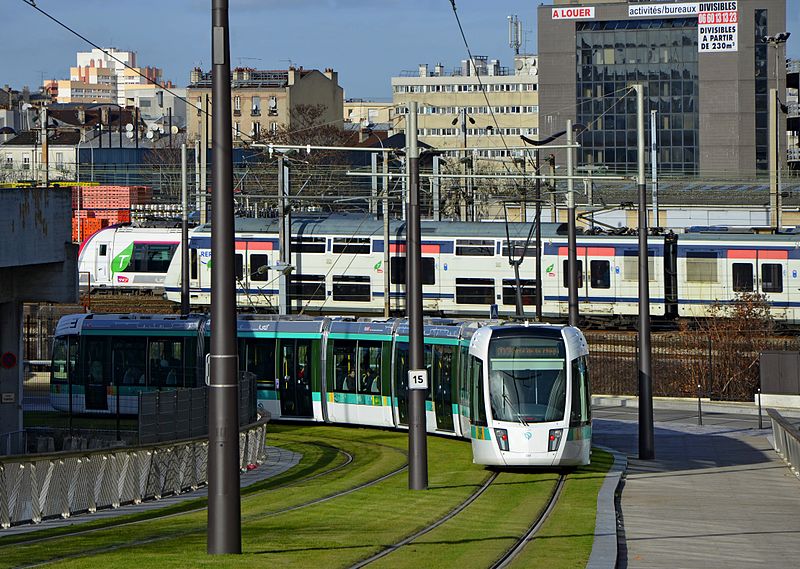
17. What transport line runs under the Promenade Pereire, a linear park in the 17th arrondissement?
The answer: RER C
This stretch of RER line C once formed part of the Petite Ceinture, a railway around the edge of Paris. It originally ran in a cutting here, but when it was brought into the RER in 1988, a roof was built on top to create room for a series of parks.
18. The Pont Caulaincourt, Paris’s oldest steel bridge, carries a road over what obstacle in the 18th arrondissement?
The answer: Montmartre cemetery
The rue Caulaincourt was planned in the 1850s, during Napoleon III’s renovations, as a bypass of the Montmartre hill. While many buildings were demolished as part of the city’s transformation, bulldozing part of the cemetery would have been a bridge too far. Traffic would instead be carried over the site, allowing mourners continued access to the graves below. Despite public outcry – how would the souls of those under the bridge reach heaven? – it was finally completed in 1888.
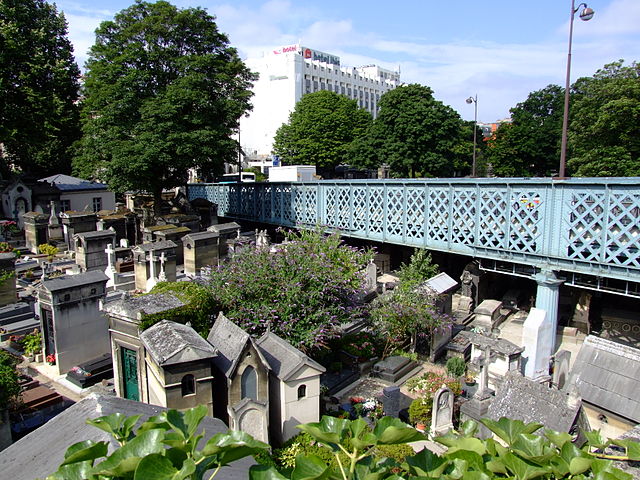
19. You can find an operational lifting bridge in the 19th arrondissement. Which street, named after a distant peninsula, does it carry?
The answer: Rue de Crimée
The hydraulically-operated bridge, a listed monument, undergoes 25 movements a day, allowing boats to pass underneath between the Bassin de la Villette and the Canal de l’Ourcq. The street above is the longest in the arrondissement.
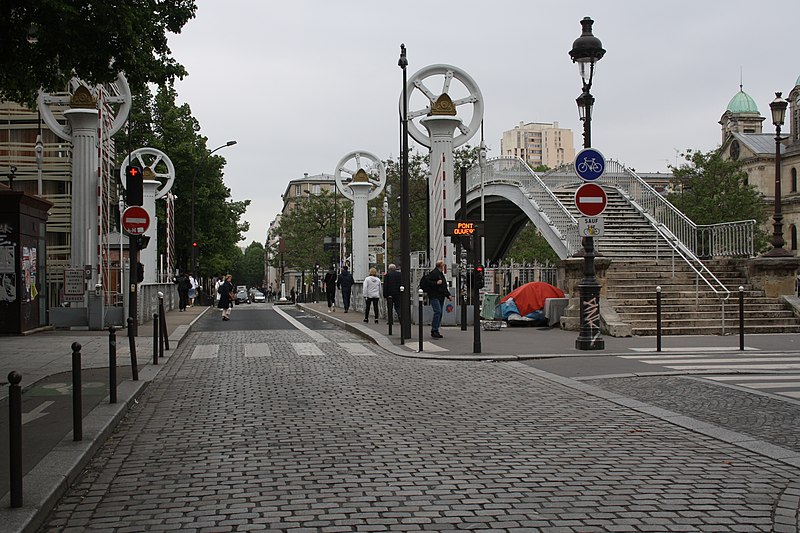
20. The Jardin de la Gare de Charonne, a park in the 20th arrondissement, lies on the site of a station on which railway, now mostly disused?
The answer: La Petite Ceinture
The Petite Ceinture was arguably the first mass transit railway in Paris. Competition from the metro and the rise of the automobile forced regular passenger services to stop in the 1930s. The line is still classified as an active railway, with parts still used for freight and a section, as we saw in question 17, now back to passenger service as part of the RER. But some sections are now used as charming linear parks, and the various station buildings have been transformed to new uses. There were two Gares de Charonne. The passenger station is still standing, and currently hosts a community music venue and bar. The goods station is now a charming neighbourhood park.
That’s all, folks! However you scored, I hope you enjoyed the quiz. And please allow me to wish you a very merry Christmas.
 Fabric of Paris
Fabric of Paris